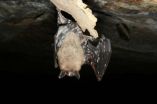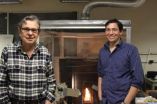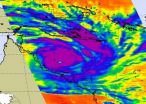(Press-News.org) SAN ANTONIO (Feb. 2, 2011) — Obesity among women of childbearing age is increasing worldwide. Because babies of obese mothers are themselves predisposed to obesity, society can reasonably expect the epidemic of obese and overweight people to continue through future generations.
In the midst of this trend, UT Health Science Center San Antonio obstetrics researchers are studying the question: If mothers lose body fat before pregnancy, does it improve the lifelong health of their children? This could be one way to break the transgenerational cycle. A collaborative study between researchers with the Center for Pregnancy and Newborn Research at the Health Science Center and the National Institute of Nutrition in Mexico City showed that if obese mothers lose weight before pregnancy, it confers health benefits on their offspring.
Research in rat mothers
In the study, researchers induced maternal obesity by feeding a group of female rats a high-fat diet prior to mating. This group of females ate the fatty chow from weaning through adolescent life to breeding and remained on it through pregnancy and lactation. Meanwhile, females in a second group were switched to normal chow one month before mating.
Reversible metabolic effects
Only male offspring were studied. At weaning, triglycerides, leptin, insulin and insulin resistance were elevated in offspring of obese mothers and all returned to normal if their mothers had received prepregnancy dietary intervention. Fat mass and fat cell size were increased in offspring of fat mothers and these changes were significantly reversed, though not completely abolished, by the dietary intervention. The authors said this is the first study showing reversibility of adverse metabolic effects of maternal obesity on offspring by a pre-pregnancy intervention. Outcomes and reversibility varied by tissue affected.
Good start in life
"Developmental programming sets the scene that influences one's health for the rest of life," Dr. Nathanielsz said. Some differences, such as heart disease and obesity, may not appear until much later in life.
"It is of interest that offspring of the obese mothers also showed high levels of leptin, a hormone that signals the brain to decrease appetite," he said. "This may mean they've developed a brain that is resistant to the signals that tell them they're getting fat, and they just go on eating and thus get fat as their mothers were. That is what we mean when we say that the effects are transgenerational. Leptin levels were normal in the offspring of the intervention group, showing that we can break this cycle."
Further directions
The experiment was novel in developmental programming – the first time a research team intervened to recuperate some animals from high-fat diets.
"We were able to see at least a 50 percent to 60 percent return," Dr. Nathanielsz said. "This is a first step. Perhaps we have to recuperate these rodents with a no-fat diet or add micronutrients to the diet. Or, there may be negative aspects to trying to recuperate too quickly. We believe this sort of information is necessary to provide guidelines as to the type of dietary intervention for women during pregnancy. Much remains to be done."
###
The Center for Pregnancy and Newborn Research is a 6-year-old program in the School of Medicine at the Health Science Center. Its researchers study developmental programming — the concept that if suboptimal conditions exist before birth, tissues develop incorrectly, leading to lifelong health consequences. Dr. Nathanielsz, and Elena Zambrano, M.D., with the National Institute of Nutrition in Mexico City, have collaborated on at least a dozen research papers in the developmental programming field.
On Twitter and the Web
For current news from the UT Health Science Center San Antonio, please visit our news release website or follow us on Twitter @uthscsa.
About the UT Health Science Center San Antonio
The University of Texas Health Science Center at San Antonio, one of the country's leading health sciences universities, ranks in the top 3 percent of all institutions worldwide receiving National Institutes of Health (NIH) funding. Research and other sponsored program activity totaled a record $259 million in fiscal year 2009. The university's schools of medicine, nursing, dentistry, health professions and graduate biomedical sciences have produced approximately 26,000 graduates. The $744 million operating budget supports eight campuses in San Antonio, Laredo, Harlingen and Edinburg. For more information on the many ways "We make lives better®," visit www.uthscsa.edu.
Losing body fat before pregnancy can be beneficial for the baby
2011-02-03
ELSE PRESS RELEASES FROM THIS DATE:
Death in the bat caves: UC Davis experts call for action against fast-moving disease
2011-02-03
A team of wildlife experts led by UC Davis called today for a national fight against a new fungus that has killed more than 1 million bats in the eastern United States and is spreading fast throughout North America.
"If we lose bats, we lose keystone species in some communities, predators that consume enormous numbers of insects, and beautiful wildlife species that are important parts of North America's biodiversity," said Janet Foley, a UC Davis professor of veterinary medicine at the Center for Vectorborne Diseases.
Foley and her co-authors' call to action appears today ...
Synthetic materials that behave like mollusk shells
2011-02-03
Nacre, commonly known as mother-of-pearl, is the iridescent material lining many mollusk shells. It is part of a two-layer armor system that protects the animal from predators. The brittle outer layer of the shell absorbs the initial impact, but is prone to cracking. To prevent these cracks from catastrophically propagating through the shell to the animal itself, the nacreous layer is surprisingly strong and tough, with outstanding crack arresting properties. Thus it acts as a lining to maintain the integrity of the shell in the event of cracking of the outer layer.
"What ...
GSA Bulletin highlights: New research posted Jan. 21-28
2011-02-03
Boulder, CO, USA - GSA Bulletin is now regularly posting pre-issue publication content -- finalized papers that have not been assigned to an issue but are not under embargo. GSA invites you to sign up for e-alerts and/or RSS feeds to have access to new journal content the minute it is posted online. Go to http://www.gsapubs.org/cgi/alerts and enter your e-mail address to manage your subscriptions.
Faulted terrace risers place new constraints on the late Quaternary slip rate for the central Altyn Tagh fault, northwest Tibet
Ryan D. Gold et al., Dept. of Geology, ...
Migraine surgery offers good long-term outcomes
2011-02-03
Surgery to "deactivate" migraine headaches produces lasting good results, with nearly 90 percent of patients having at least partial relief at five years' follow-up, reports a study in the February issue of Plastic and Reconstructive Surgery®, the official medical journal of the American Society of Plastic Surgeons (ASPS).
In about 30 percent of patients, migraine headaches were completely eliminated after surgery, according to the new study, led by Dr. Bahman Guyuron, chairman of Plastic and Reconstructive Surgery at University Hospitals Case Medical Center and Case ...
Researchers lead search for better drug-addiction treatments
2011-02-03
DALLAS – Feb. 3, 2011 – UT Southwestern Medical Center psychiatry researchers are leading the Texas arm of a national network that conducts clinical trials aimed at finding effective treatments for drug addiction.
More than 100 community treatment providers and academic medical centers throughout the country are funded in part through the National Institute on Drug Abuse's Clinical Trials Network (CTN). The Texas component includes partnerships between academic and community treatment providers in Dallas, El Paso, Austin and Houston. It is led by Dr. Madhukar Trivedi, ...
Earth's life support systems discussed in an open-access special issue
2011-02-03
In the search for life on Mars or any planet, there is much more than the presence of carbon and oxygen to consider. Using Earth's biogeochemical cycles as a reference point, elements like nitrogen, iron and sulfur are just as important for supporting life. As explored in studies published in February's open-access Special Issue of Frontiers in Ecology and the Environment, the most basic elements work together to support an extraordinary diversity of life.
Cycles of carbon, nitrogen and phosphorous are intertwined and rely on organisms just as much as organisms rely ...
GOES-13 Satellite sees Groundhog's Day on ice
2011-02-03
Punxsutawney Phil predicted that spring will come on time, and NASA satellite data suggests that residents in more than one-third of the U.S. are now anxious for the prediction to come true.
A massive winter storm touched 30 states over the last couple of days, including Phil's home at Gobbler's Knob in Punxsutawney, Pa. where rain mixed with sleet and freezing rain this morning before it changed to snow as part of that system. Phil's town is about 80 miles northeast of Pittsburgh. Looking at the satellite data, it's more than likely that the cloud cover and wet weather ...
UC San Diego engineers play role in warehouse fire safety
2011-02-03
VIDEO:
UCSD engineers are studying how cardboard boxes burn in an effort to help predict how warehouse fires spread and to prevent severe damage and loss of lives.
Click here for more information.
Imagine this: Firefighters enter a several football field-sized, 60-foot high, pitch-black warehouse and they can't see inside—they don't know if there is an inferno or a small fire with a lot of smoke. It's a very dangerous situation, making choices hard. Engineers at UC San ...
Experiment reaches biology milestone with hard X-ray laser
2011-02-03
TEMPE, Ariz. – Unraveling the molecular basis of life is an age-old quest of humanity. A breakthrough towards this goal was reported in a pair of studies published Feb. 3 in the scientific journal Nature, detailing a new method developed to determine structures of biomolecules based on diffraction from protein nanocrystals that are so small that they are not even visible under the microscope. A tiny aerojet nozzle provides a fully hydrated constant stream of nanocrystals, both supplied from an interdisciplinary research team at Arizona State University.
These developments ...
NASA Aqua Satellite sees powerful Cyclone Yasi make landfall in Queensland, Australia
2011-02-03
NASA's Aqua satellite captured visible and infrared imagery of powerful Cyclone Yasi as it was making landfall in Queensland. The center of the monster cyclone Yasi made landfall on Australia's northeastern coast early Thursday (Australia local time) bringing heavy rainfall, severe winds and storm surge.
On Feb. 2 at 03:35 UTC/1:35 p.m. Australia local time, the Moderate Resolution Imaging Spectroradiometer (MODIS) instrument on NASA's Aqua satellite captured a visible image of Cyclone Yasi before it made landfall in Queensland, Australia. The eye of the cyclone was ...




